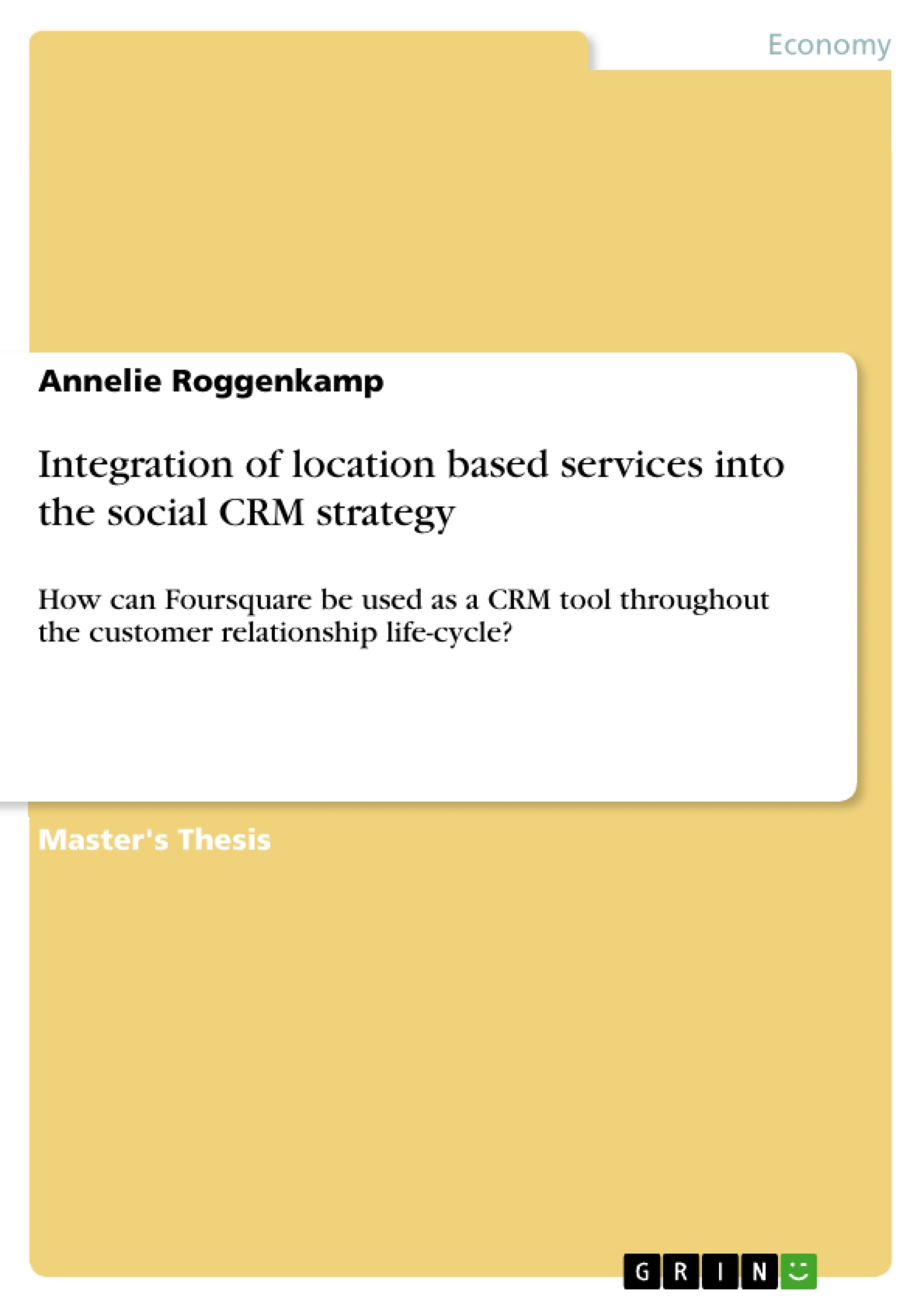This thesis aims at critically analyzing Foursquare from a customer relationship
management (CRM) perspective. After elaborating on CRM and carefully
scrutinizing the mobile application and its functions, the author aims at investigating
how Foursquare can be used as a CRM tool throughout the customer relationship
life-cycle. Since large companies managing renowned brands usually
have more sophisticated tools to enforce their CRM strategy, this thesis is less
concerned with those large enterprises, but rather focuses on small, local businesses
that decide to enter the realm of customer relationship management.
Table of Contents
- Introduction to the research question
- Research targets, design and methods used
- Literature review
- Field study
- Pilot project
- Depth interviews
- Online survey
- Topic related background information
- An introduction to CRM
- Definition of CRM
- Customer relationship life-cycle
- Social CRM
- Game changing technological developments
- Location based services
- An introduction to Foursquare
- Functions of Foursquare from the point of view of users
- Functions of Foursquare from the point of view of businesses
- Comparison of check-in services used in Germany
- An introduction to Couponing
- Process of couponing
- Design possibilities of coupons
- Couponing throughout the customer relationship life-cycle
- An introduction to CRM
- How to best exploit the potential of Foursquare throughout the customer relationship life-cycle
- The potential of Foursquare in Germany
- Design possibilities of Foursquare specials
- Foursquare specials throughout the customer relationship life-cycle
- Foursquare campaign promotion
- Foursquare targets and related KPIs
- Limitations of Foursquare and conclusion
- Outlook
Objectives and Key Themes
This thesis aims to critically analyze Foursquare from a customer relationship management (CRM) perspective and investigate how it can be used as a CRM tool throughout the customer relationship life-cycle. It focuses on small, local businesses that decide to enter the realm of customer relationship management. Key themes explored include: * The evolution of customer relationship management and the emergence of social CRM. * The role of location-based services and check-in apps, particularly Foursquare, in the digital landscape. * The potential of Foursquare as a tool for customer acquisition, retention, and revitalization. * The design and implementation of effective Foursquare campaigns, including the use of specials and incentives. * The measurement and evaluation of Foursquare campaigns through relevant KPIs.Chapter Summaries
The first chapter provides an overview of the research question and highlights the changing consumer behavior driven by digital technologies. The second chapter outlines the various research methods employed, including a literature review, field study, pilot project, depth interviews, and online survey. The third chapter explores the theoretical background information related to CRM, social CRM, location-based services, and couponing, providing context for the analysis of Foursquare. The fourth chapter investigates the potential of Foursquare in Germany, analyzing survey results on user awareness, usage, and attitudes towards its sub-functions. It then explores the design possibilities of Foursquare specials, their application throughout the customer relationship life-cycle, and methods for promoting Foursquare campaigns. Finally, the chapter introduces key performance indicators (KPIs) for evaluating Foursquare campaign success. The fifth chapter addresses limitations of Foursquare, including privacy concerns, low adoption rates, and the specific user profile. Despite these limitations, the chapter argues that Foursquare can be a beneficial tool for certain businesses, particularly SMEs. It concludes by summarizing Foursquare's potential as a CRM tool and recommending its integration into SCRM strategies. The final chapter offers an outlook on the future of Foursquare and its potential for growth in the German market. It highlights the app's strengths as a CRM-oriented tool and emphasizes the importance of integrating it with other social media platforms for effective customer relationship management.Keywords
This thesis explores the intersection of customer relationship management, social media, and location-based services, focusing on the potential of Foursquare as a CRM tool. Key concepts include customer relationship life-cycle, social CRM, location-based services, check-in apps, Foursquare specials, couponing, KPIs, awareness, adoption, and user behavior. It investigates the potential of Foursquare for SMEs to attract, retain, and revitalize customers in the digital age.
Final del extracto de 198 páginas
- subir
- Citar trabajo
- Annelie Roggenkamp (Autor), 2012, Integration of location based services into the social CRM strategy, Múnich, GRIN Verlag, https://www.grin.com/document/214948
Leer eBook



